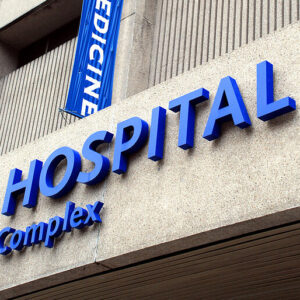How do you get conservative anti-DEI activist Dr. Stanley Goldfarb and New York’s socialist mayor candidate Zohran Mamdani on the same page?
Ask them about nonprofit hospitals and the abuse of billions in tax breaks meant to support community health care.
“These taxpayer subsidies, worth billions each year, are designed to help hospitals provide care to the underserved,” Goldfarb, chairman of medical ethics group Do No Harm, told the House Ways and Means Committee during a recent hearing. “But instead of focusing on curing disease, expanding access to care, and saving lives, too many of these institutions are squandering their taxpayer-backed resources on ideological experiments.”
And Mamdani wrote an article for the leftwing Jacobin magazine earlier this year, calling out New York hospitals like NYU Langone for “receiving far more in subsidies than it provides in community benefits — $222 million more.”
The data show they may be right.
A 2023 report from Johns Hopkins University and Texas Christian University researchers found nonprofit hospitals received $37.4 billion in tax benefits in 2021 — including $11.5 billion in federal tax breaks, $9.1 billion in sales tax exemptions, and $7.8 billion in property tax benefits.
Yet those same hospitals provided only $15.2 billion in charity care that year, according to Ge Bai, a professor of health policy and management at Johns Hopkins Bloomberg School of Public Health.
“Nonprofit hospitals have a social contract with taxpayers,” Bai told the House Oversight Subcommittee. “Hospitals receive subsidies through tax exemptions and have an obligation to give back. Charity care is the most objective and comparable measure of that effort — and it falls far short.”
Bai’s prior studies have also questioned whether nonprofit hospitals behave much differently from their for-profit counterparts. In one 2017 analysis, the top 5% of the most profitable nonprofit hospitals generated more than half of all profits but provided only about 20% of total charity care. Another study, published in 2019, found nonprofit and for-profit hospitals had nearly identical Medicaid shortfalls as a share of expenses.
“Nonprofit hospitals in the United States do not appear to operate meaningfully differently than for-profit hospitals,” said Christopher M. Whaley, associate director of the Center for Advancing Health Policy through Research at Brown University’s School of Public Health.
The most recent scrutiny comes from a 2024 report by the Center for Medicine in the Public Interest (CMPI), which examined how nonprofit hospitals in New York spend taxpayer-subsidized funds. The report found multimillion-dollar executive pay packages, extensive marketing budgets, and millions spent on political lobbying — even as some facilities reduced staff or raised patient costs.
According to CMPI, Montefiore’s CEO earned more than $16 million in 2023, NYU Langone’s top executive made $8.8 million, and Memorial Sloan Kettering’s CEO received $5.4 million. Mount Sinai’s chief earned $2.7 million, while NewYork-Presbyterian paid its CEO $9.2 million the same year.
The report noted that NewYork-Presbyterian announced roughly 1,000 layoffs in May 2025, just days after agreeing to a $750 million settlement over sexual abuse allegations involving a former physician.
The CMPI analysis also highlighted heavy marketing and lobbying spending. In 2019, NYU Langone spent $34 million on advertising, while Montefiore and Northwell Health each topped $15 million. Memorial Sloan Kettering spent $9.5 million that year.
“The divergence between the mission of nonprofit hospitals and their operations can no longer be ignored,” CMPI President Peter Pitts said. “Profits cannot be placed over patient well-being, and revenue must not be prioritized over responsibility.”
The findings have fueled growing bipartisan frustration in Congress. Lawmakers from both parties say the tax benefits granted to nonprofit hospitals — estimated at more than $30 billion annually — may no longer align with the limited charity care and community benefits some provide.
Policy experts say reform could include tying tax exemptions to stricter standards for charity care, capping executive pay, or enforcing transparency rules for pricing and lobbying expenditures.
While the American Hospital Association argues that nonprofit hospitals contribute to their communities through education, research, and public health initiatives beyond charity care, critics counter that such contributions are difficult to quantify — and don’t justify massive tax breaks.
For once, Democrats and Republicans may be on the same page: nonprofit hospitals should prove they’re earning their tax-exempt status.


